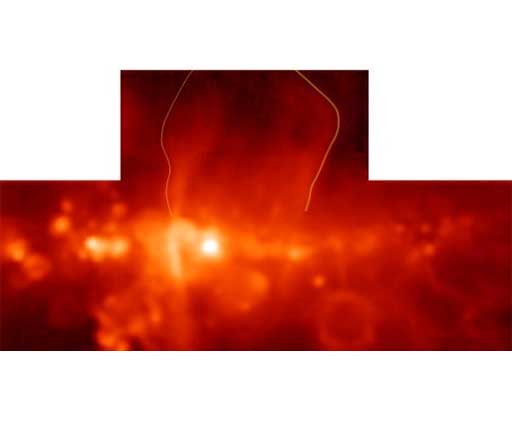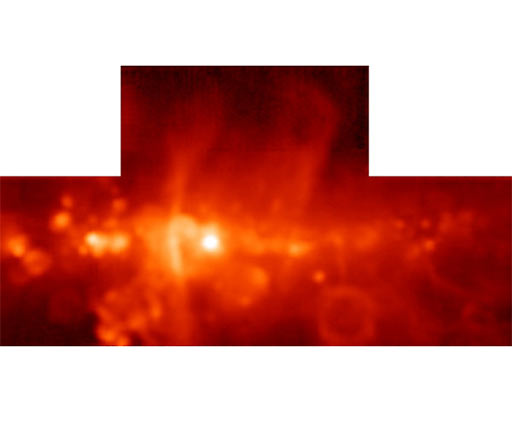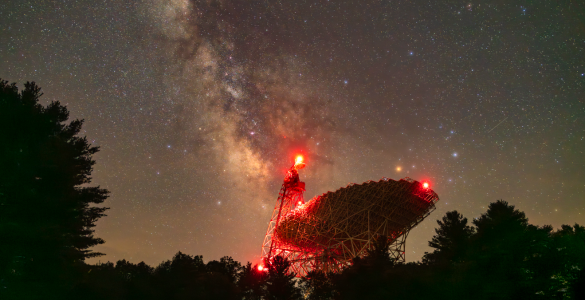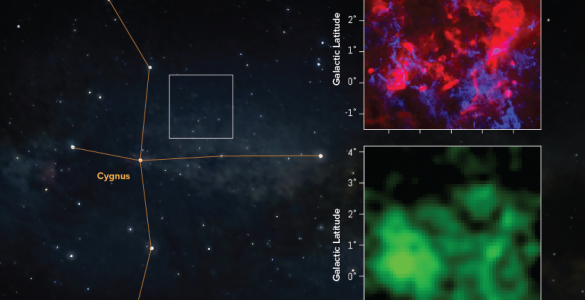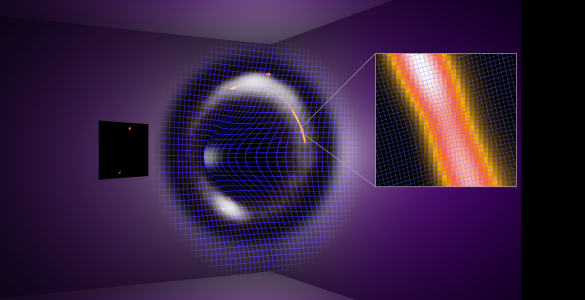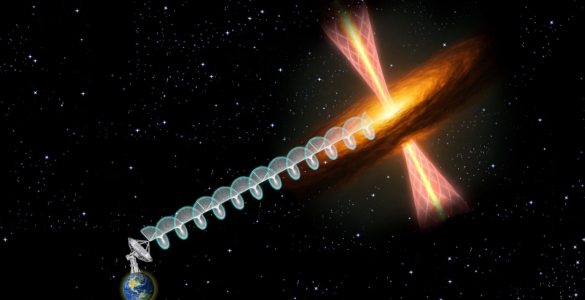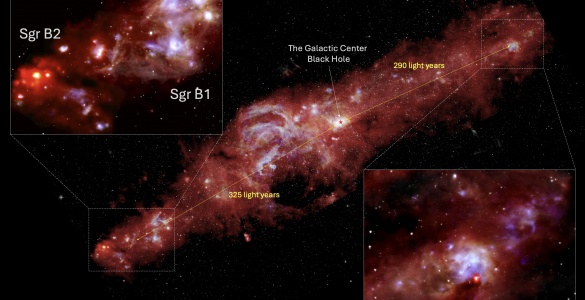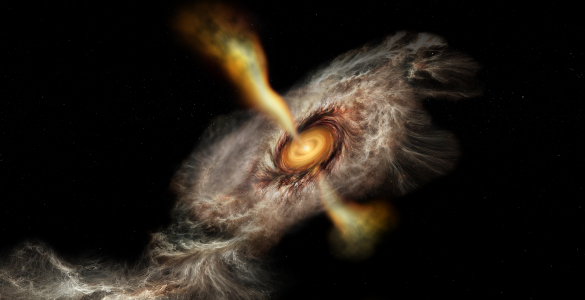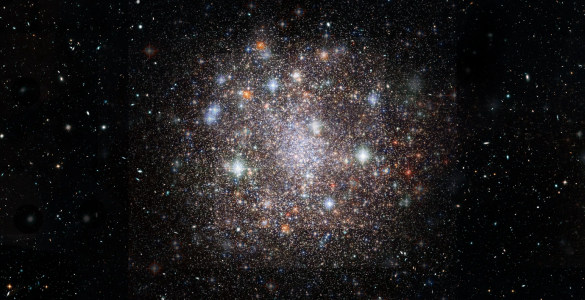An astronomer using the National Science Foundation’s Robert C. Byrd Green Bank Telescope (GBT) has discovered that two prominent features rising out of the center of the Milky Way Galaxy are actually the distant edges of the same superstructure. This object, which has the appearance of a “lobe,” may have been formed during an epoch of furious star formation.
Astronomer Casey Law of Northwestern University presented his results at the Denver, Colorado, meeting of the American Astronomical Society.
“The center of our Galaxy is an incredibly dynamic place and morphologically very difficult to untangle” said Law. “Among the many features we see there, including supernova remnants, hot star-forming regions, and massive molecular clouds, are two very prominent columns of radio-emitting material that seem to erupt out of the plane of the Galaxy. The nature and origin of these features have been the subjects of much speculation, but with the new data from the Green Bank Telescope we’re finally able to discern that they are in fact part of the same superstructure.”
Much of what we know about the center of our Galaxy has come from studies conducted on radio telescopes. The center of the Milky Way is, in fact, hidden from view to optical telescopes due to intervening clouds of dust and gas. Radio waves, however, are able to pass through the obscuring material and reveal details about the core of our Galaxy.
Astronomers now know that this area of the Milky Way — approximately 26,000 light-years from Earth — is a densely packed region brimming with hot , young stars, supernova remnants, and more esoteric features — like long radio-emitting filaments. At the center of it all is a remarkably radio-bright region known as Sagittarius A* (pronounced A-star), which is known to contain a supermassive black hole. Deciphering what all these features are and how they are formed are particularly difficult tasks.
To help better understand the nature and possible connection of the columns in this study, Law studied data taken by a team of astronomers who used the GBT to create what is being called “the best single-dish survey of the Galactic center.” The team made several maps of the Galactic center at multiple wavelengths, from as short as 3.6 centimeters to as long as 90 centimeters.
By comparing an object at multiple radio frequencies (known as the spectral index), astronomers can produce a more complete picture of that object and also determine how the radio waves were produced.
Hot bodies, such as stellar nurseries and even our Sun, generate radio waves across the radio spectrum. This is known as thermal emission, and it is characterized by stronger emission at shorter wavelengths.
Other radio waves are generated by the acceleration of electrons within a magnetic field, which is the same process that causes quasars and pulsars to emit radio waves. This is known as non-thermal emission and it is characterized by stronger emission at longer wavelengths.
“By looking at the features in the Galactic center at multiple frequencies,” said Farhad Yusef-Zadeh of Northwestern University and a member of the observation team, “we can not only distinguish between thermal and non-thermal processes, but we can also compare and contrast different features to see if they are related.”
In looking at the lobe, which rises approximately 450 light-years above the Galactic center, Law determined that the spectral index of both sides of the lobe matched almost identically.
“Early radio surveys of the galactic center suggested that the two columns eventually connected above the plane of the Galaxy,” said Law. “But the clear correlation we now see between these two distant features strongly suggests that they are part of the same structure and produced by the same process.”
One of the leading explanations of how these features were produced is by a wind of energetic particles driven by an epoch of starburst near the Galactic center.
Law speculates that approximately 10 million years ago, there was a furious period of star formation, with many stars being born and quickly dying in a series of supernovae.
“At that time, something caused an acceleration of star formation near the very center of our Galaxy that thrust this material out of the plane of the Galaxy. The hot, young stars would have generated a lot of wind, and the supernovae would have contributed more energy,” added Law. “This collective energy would have blown a lot of gas out of the disk for an extended period, eventually producing the features we see today.”
As the hot gas and particles shot out of the plane they would have “shocked” or energized the gas in the interstellar medium, which would have concentrated and amplified the ambient magnetic fields. The magnetic fields would then have accelerated electrons in the interstellar medium, producing the non-thermal radio profiles of the lobe.
Earlier work done by other researchers estimates that this feature could contain approximately 5,000,000 solar masses of material, and that — in the starburst model — it would take the energy of possibly 10,000 supernovae to eject that amount of material out of the plane of the Galaxy and produce the feature seen in the lobe.
In addition to Law and Yusef-Zadeh, the team that conducted the multiwavelength GBT survey included Douglas Roberts and Jack Hewitt of Northwestern University, and William Cotton and Ron Maddalena of the National Radio Astronomy Observatory.
The National Radio Astronomy Observatory is a facility of the National Science Foundation, operated under cooperative agreement by Associated Universities, Inc.
Contact:
Charles Blue, Public Information Officer
Charlottesville, VA
(434) 296-0323
cblue@nrao.edu






